Introduction:
Are you wondering what is the full form SEO, PPC, SEM and SMM?
Do you want to know the full form of SEO, PPC, SEM and SMM?
If your answer to the above two questions is yes, then you have come to the right place. In this blog post, I’ll not only tell you what is the full form of SEO, PPC, SEM and SMM but also share the functioning of above mentioned 4 topics.
So, without wasting further time lets begin.
1. Full-Form OF SEO | What Does SEO Stand For?
Full form of SEO is search engine optimization which is a process of ranking a particular website or web-page on top of search engines in the organic listings. By organic listings I mean ranking in the unpaid section.
Check out the image below to understand the difference between paid listings and organic (free) listings.
Function of SEO:
In today’s online business landscape, SEO is not necessary but a necessity for every online business. It helps businesses in generating leads, organic traffic, increasing online visibility and much more.
However, the basic function of SEO is to increase the websites organic traffic and rankings in the unpaid section. These two objectives are the most important objectives of SEO and also justifiable, because the more traffic a website has, the better will be its sales and revenue.
Also, I personally feel that SEO is also one of the nicest and amazing ways of marketing and promotion on various search engines like Google, Bing and more.
SEO is not static. In other words, it is constantly according to the algorithms of search engines. This means that it is dynamic, vibrant and requires constant changes to strategies. For more information on how a professional can help you ace your SEO efforts, visit site.
Types Of SEO:
Now that you know what is the full-form of SEO and what is the basic function of SEO, so now let me tell you about various types of SEO.
1. On-page SEO
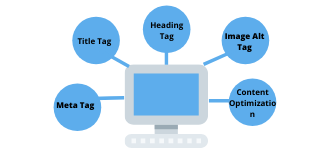
The first type of SEO is on-page SEO or on-site SEO. On-page SEO means conducting the SEO activities within the website. On-page SEO mainly involves optimization of websites content and HTML source codes like title tags, meta tags, heading tag, image alt tag and more.
Following are the top-10 on-page SEO factors:
- URL optimization.
- Title tag optimization.
- Heading tag.
- Meta description tag optimization.
- Website content optimization.
- Image Alt tag.
- Website speed.
- Page experience.
- Sitemap and Robots.txt
- Internal linking.
2. Off-page SEO
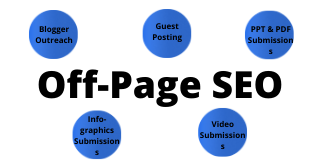
Off -page SEO is just opposite of on-page SEO. It refers to conducting SEO activities outside of a website. It’s simple language, off-page SEO means creating more content or links for your website on the internet.
These content and links act as recommendation and vote of confidence to search engines like Google. The more links and recommendations your website has, the better will be its ranking.
In my opinion off-page SEO plays more than 50% role in ranking any website or web-page on search engines.
Following are top-10 off-page SEO techniques:
- Guest posting.
- Blogger outreach.
- Article submission.
- PPT and PDF submission.
- Image submission.
- Infographics submission.
- Video submission.
- Blog commenting.
- Forum and directory listings.
- Profile creation and more.
3. Black hat SEO

The next type of SEO is black hat SEO which is also called negative SEO or unethical SEO. Generally, this type of SEO technique is not recommended by search engines. In fact, search engines like Google penalizes the website that implements black hat SEO techniques.
However, I have also seen some bloggers and web-masters getting quality results from black hat SEO techniques like 301-redirection and PBN.
In my personal opinion, I won’t recommend you to implement black hat SEO techniques on websites which you have created for long-term reasons. One can implement these techniques on their short term goal website.
Following are the top black hat SEO techniques:
- PBN or private blogging network.
- Hidden text.
- Cloaking.
- Doorway pages.
- Content automation.
- Keyword stuffing.
- Link farms or schemes.
- Duplicate content or article spinning.
- Buying links.
4. White hat SEO

White hat SEO is just the opposite of black hat SEO. It is also called ethical SEO. Generally, search engines like Google recommend this type of SEO and reward the website that implements white hat SEO by improving its ranking.
White hat SEO is a long-term SEO strategy that takes time to give results. But when white hat SEO is successfully implemented, it gives long-term results. So, if you want to get long-term and fruitful results from SEO then implement white hat SEO technique only.
5. Grey hat SEO

The next type of SEO is a grey hat SEO. This type of SEO technique is a combination of white hat and black hat SEO. Some SEO experts may recommend this technique and some may not. I would personally suggest you opt for this technique but don’t depend too much on it.
You can implement grey hat SEO technique to the extent of 10%-20%.
6. Local SEO

As the name says, Local SEO is all increasing the presence of locals on search engines like Google.
In the year 2014, Google came out with pigeon update that gave more opportunity to local business websites to increase their sites ranking for location specific keywords like:
- Digital marketing companies in Nagpur.
- Digital marketing companies in Delhi.
- Digital marketing companies in Kolkata.
- Digital marketing agencies in Mumbai and so on.
Earlier small scale businesses used to struggle with big brands in ranking their site on Google. But with the pigeon update things went in favor of small businesses.
7. eCommerce SEO
Again, as the name says, eCommerce SEO is all about ranking eCommerce websites on search engines for better traffic and online visibility.
Due to the increase in online business activities, online sales and shopping, eCommerce SEO has become a necessity of all the eCom websites. One SEO stats says that 39% of eCommerce traffic comes from search.
That’s why eCommerce SEO is utmost important for online businesses, especially the ones who are running online stores.
2. Full Form Of PPC | What Does PPC Stand For?
Till now, you might have understood what is the full form of SEO, what are the various types of SEO and how does SEO work. So, now let us understand what is the full form of PPC in digital marketing.
Full form of PPC is Pay Per Click which is a form of online advertising model in which advertisers pay a certain amount whenever a user clicks on the ad. This type of online advertising works on real time bidding and auction.
One of the biggest advantages of PPC is that advertisers need to pay money only when someone clicks on an ad and not for the impressions.
Function of PPC:
The function of PPC ads is to give fast and quick results to online businesses. PPC ads not only help businesses in reaching our customers in the quickest way but also gives them maximum ROI.
PPC ads also perform well when it comes to getting sales and conversions, provided that you are bidding for right keywords.
Apart from this, PPC ads are also measurable which means one monitor the PPC campaign performance makes changes accordingly.
To summarize it, following are the functions of PPC:
- Real time tracking.
- Instant boost in traffic.
- Quick results.
- Pay only for clicks.
- High conversion rate.
What are various types of PPC ads?
So, I’ll assume that you might have understood what is the full-from PPC and how it works. Now let me tell you a bit about how many types of PPC ads are there.
1. Search ads
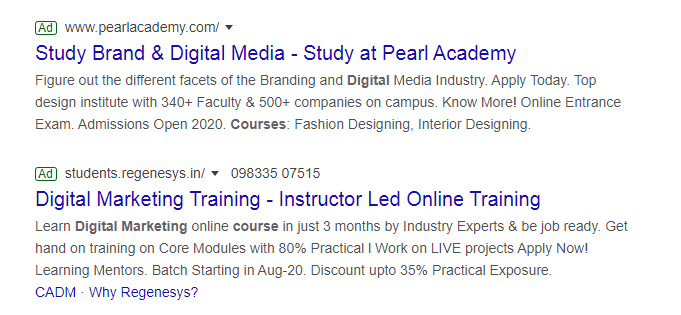
These are the most common types of PPC ads that you’ll come across on search engines like Google. Such ads appear on SERP pages for a given set of targeted keywords.
Search ads are excellent for increasing online sales and conversion.
2. Display ads.

Display ads are another type of PPC ads which you may find on various search partner websites of Google and other search engines. Display ads may be in the form of text, video or image.
3. Social media ads.

As the name suggests, social media ads is a type of PPC ads that you may come across various social media channels like Facebook, Twitter, Instagram, LinkedIn and more.
4. Re-marketing ads.
Remarketing ads are those types of PPC ads that you may show to the site visitors who have interacted with your product or services but didn’t not purchased it. Such types of PPC ads are good for increasing sales and conversion.
5. Gmail ads.
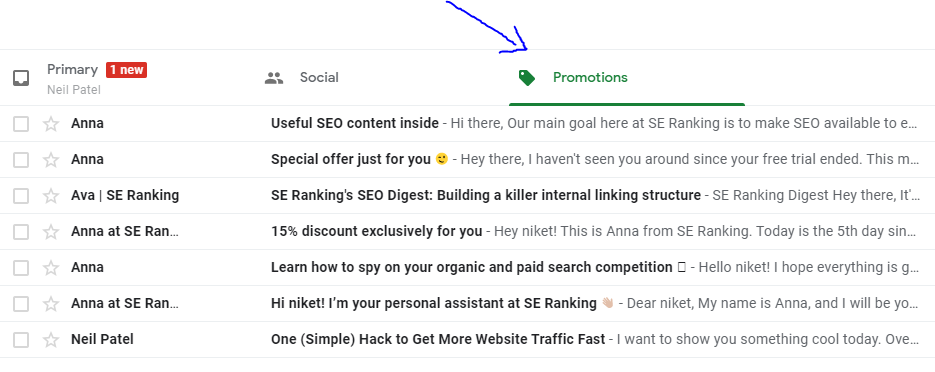
The promotional emails that you get on your gmail account are also one of the types of PPC ads.
6. Mobile ads.
Last but not the least is mobile ads.
This type of PPC ads appear on cell phones when you’re playing games on mobile, interacting with any application or running a browser.
3. Full Form Of SEM | What Does SEM Stand For?
Full form of SEM is search engine marketing which means marketing and promoting on search engines like Google, Yahoo, Bing and more.
SEM includes two most important techniques which is search engine optimization and Google ads.
Function Of SEM:
The function of SEM is to enable businesses to promote their products or services on search engines like Google, Yahoo and Bing. Businesses can do this either by implementing SEO or Paid ads.
I have already talked much about SEO and Paid ads in the above section on this post.
To sum it up, following are the functions of SEM:
- Reach customers globally.
- Wide targeting options.
- Increase brand awareness.
- Easy to use and implement.
4. Full form Of SMM | What Does SMM Stand For?

Full form of SMM is social media marketing.
Social media marketing is a type of digital marketing in which focuses on using social media as a tool for marketing and promotion. In recent years, companies have started using social media marketing extensively for increasing brand exposure and customer reach.
One of the core aspects of social media marketing is social media optimization or SMO. SMO is just like SEO, which focuses on optimizing social media posts and campaigns for better reach, visibility and performance.
Function Of SMM:
The basic function of social media marketing is to increase the brand awareness of any business, product or services. Today, most of the brands are using social media marketing as it is cost-effective and increases to brand awareness in a quick time.
Apart from from increasing brand awareness, social media marketing can also be used for increasing website traffic. By sharing blog post content on Facebook, Twitter, Pinterest and LinkedIn, one can attract a good amount of traffic on websites.
Moreover;
One can also use social media for selling products, because people have started buying products on social media.
To Simply put, following are the functions of SMM:
- Get wide reach.
- Get enough targeting options.
- Get more traffic.
- Connect with customers in a better way.
- The benefit of social listening and much more.
FAQs
Full form of SEO search engine optimization which is a process of improving the websites ranking on search engines like Google.
Black hat SEO, white hat SEO, grey hat SEO, on-page and SEO, off-page are some various types of SEO.
SEO is cost-effective technique of marketing and promotion and SEM is paid form of marketing on search engines.
SEO works by the process of increasing the ranking of any website or a web-page on the search engines.
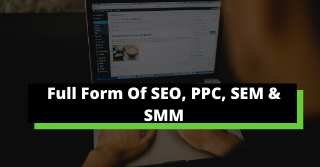
Deprecated: str_contains(): Passing null to parameter #1 ($haystack) of type string is deprecated in /home1/thediho7/public_html/wp-includes/comment-template.php on line 2656